I like guns. I tend to hang out with folks who like guns. While I’m not looking to add any guns to my collection, I sometimes have a hard time passing up a genuine bargain. I found one of those bargains recently when a friend of a friend asked if I wanted to buy a 1911.
“It needs some work done,” he said.
It needs some work done. That could mean almost anything. That 1911 could be a paperweight with a serial number. Or maybe not. Whenever I hear the phrase “it needs some work done,” I always ask “How much?” And I typically mean that in two ways–how much work does it really need, and how much are you trying to sell it for?
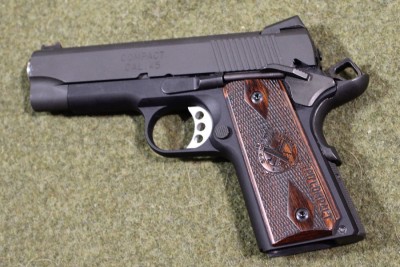
This is the condition of Springfield when I got it. I wondered why he handed it to me with the hammer cocked. But this is a great gun that deserves to be fixed.
Assess the Situation
This exchange cues an inner monologue of my own. It goes something like this:
- Am I familiar with this gun?
- Can I repair it myself?
- Can I get parts?
- How long will the repair take, and how much will it cost me?
- What is the gun worth repaired?
- What can I buy it for?
“It needs some work done,” typically means it needs a ton of work, or that the work it needs is way past the skill level of the person selling the gun. Either way, I can’t typically tell unless I get into it myself. And that isn’t always possible before the sale, so if the price is right….
Buyer Beware
As shocking as it may seem, there are some people out there who will try to sell some janky, busted-up junk! Those very same people may even lie to you about what is wrong with said junk! I know, it’s hard to believe. I have learned to assume the worst when it comes to guns that “need a little work.” I always plan on replacing any part that looks damaged, broken or suspect while calculating the potential value of such a buy.
One thing to watch out for, if you have the chance to handle the gun before you buy it–be careful if you take the gun apart–you wouldn’t want to be accused of damaging the gun in the process.
Exhibit A
I recently found a deal on a Springfield Armory Range Officer compact .45ACP. The gun had only one issue, according to its current owner: “The trigger won’t move and the hammer won’t drop.” I decided to give it a look-over. As I’ve had some prior experience with the RO, and lots with the 1911, I noticed that the disconnector was not in the proper position.
I’ve shot a few Range Officers, and several Springfield 1911s. Their guns aren’t prone to problems. Odds are this would be an easy fix. There was very little wear on the gun. My best guess was that the owner had tried to lighten the trigger, or smooth something out and had botched the repair, but wasn’t willing to admit it.
We were able to work out a deal and we both walked away from it happy.
The Teardown
Step 1. Get a parts list going.
Upon removing the slide, I discovered that the extractor appeared to have been replaced but not fitted to the rear of the frame. This was not a function issue, but did warrant a cosmetic repair. Everything else appeared to be functioning properly and looked factory fresh, with little wear.
[one_half]
[/one_half][one_half_last]
[/one_half_last]
I then began disassembling the lower, where the mystery of the failure to fire would be solved. The sear and disconnector were locked out of place, with the trigger return spring wedged in between them. I removed the main spring housing and found that the pin that kept the main spring assembly in place was gone. Because of this, what should have been a single assembly had divided into four parts.
[one_half]
[/one_half][one_half_last]
[/one_half_last]
This is where a little experience comes in handy. A total novice may not have picked up on the issue. Even avid 1911 fans sometimes won’t take their guns down this far.
As I finished the break down, the trigger would not move freely, despite the lack of tension it was under. I believed that the trigger bow had been bent with the other parts locked in place, but when I removed the magazine release I saw that the bow was not bent at all. Rather, someone had installed a trigger without fitting it.
The Repair
I had to fit that trigger properly. I did so by removing metal from the top of the trigger with sanding sticks until it was smoothly running in the frame. The next step was to install the sear and disconnector, along with the trigger return spring. This proved to be impossible with the spring that was in the gun; it was the wrong size.
[one_half]
[/one_half][one_half_last]
[/one_half_last]
[one_half]
[/one_half][one_half_last]
[/one_half_last]
One replacement spring later, and the part was working properly. I didn’t have a pin for the main spring housing handy, so I had to order one and wait. Once UPS delivered my love from Brownell’s, the gun was ready for final assembly and testing.
The Result
The gun is now working as designed. I fitted the trigger, replaced two parts, and function-checked the Range Officer. With the extractor fitted to the rear of the slide, a bit of file work, and some finish from a pen, Exhibit A will be in perfect condition. Except… wait a minute. Where are the magazines? Remember the whole Buyer Beware spiel, and the checklist? I forgot a bullet point in there: always ask “Where are the magazines?” I had taken the box with the gun in it and assumed that, surely, there would be at least one magazine in there… Oh well- back online to Brownell’s!
Buy a Springfield Armory Range Officer on GunsAmerica: https://www.gunsamerica.com/Search.aspx?T=range%20officer
[one_half]
[/one_half][one_half_last]
[/one_half_last]
[full_width]
[/full_width]

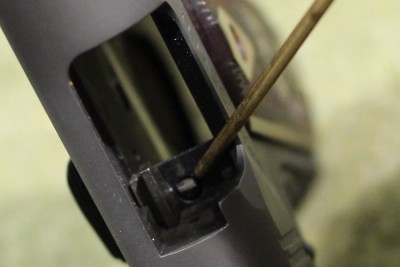
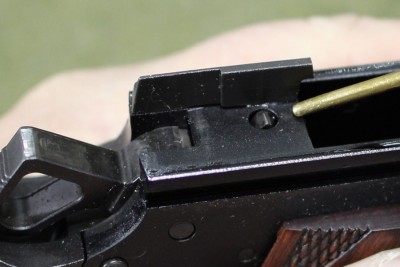
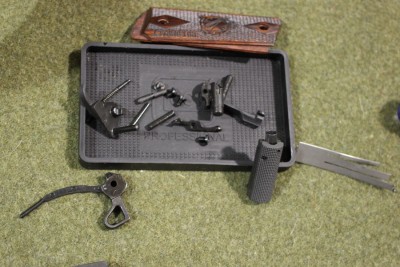
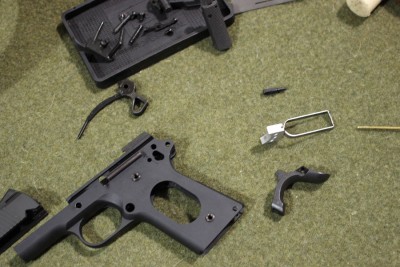
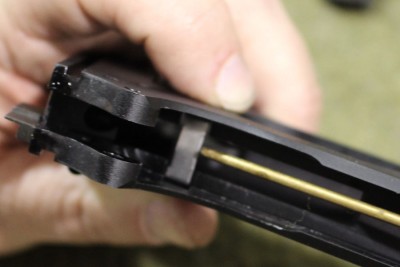
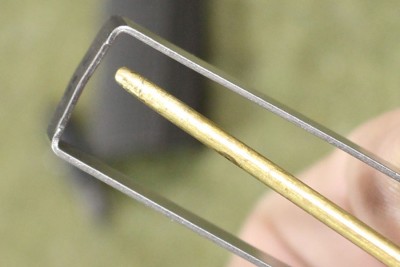
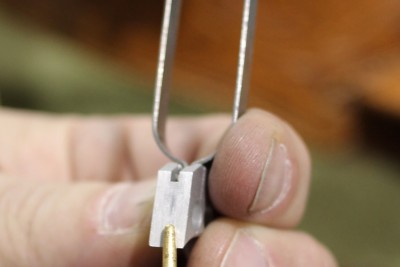
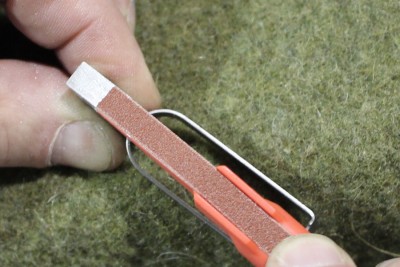
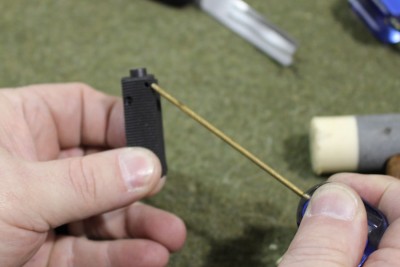
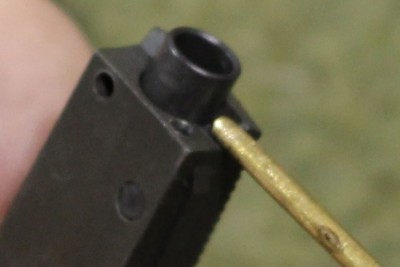
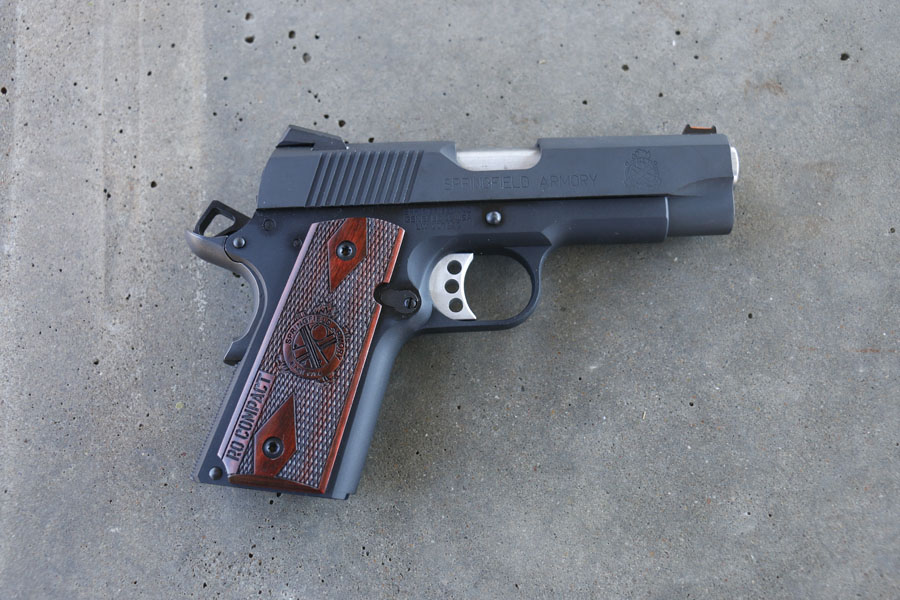
I have been thinking about buying a 9mm from a friend that could use a little work. I always have enjoyed working on a project! My husband and I really love to go shooting so it would be nice to have a handgun that I have put a lot of work into. I really appreciate the list of questions that you have laid out under \”assess the situation.\” I\’ll have to keep those in mind while I am trying to make my decision. I may just take it to a gunsmith in case I can\’t figure out how to fix it myself.
That is very interesting that if you try and take a gun apart at a store you might be accused of damaging the gun. I’m glad that I am now aware that I shouldn’t do that. If I was really excellent with guns though and wanted to buy a used gun that “needed a little work” I’d want to take it apart to make sure it didn’t need more than a little gun repair. I’ll keep this advice in mind if I ever buy a gun.
Thank YOU, for the excellent and informative article! Well written so that even a simpleton like me can understand what to look for “when it needs some work”. I do pretty well on Smith & Wesson revolvers, 1911’s I go much slower in the diagnostics.
Again, excellent work! Thanks!
I always carry a 1911 auto for self defense,. Usually a officer’s model, or light weight Commander. They ALWAYS have one in the tube, cocked and locked. Been doing it the same way every day for more than 33 years now and see no reason to change.
Nice post and pix on the take down. Thanks.
If you are going the 1911 route you have to educate yourself on all functions and history. Read both; The M1911 Complete Owner’s Guide and The M1911 Complete Assembly Guide by Walt Kuleck and Drake Oldham. There are others but these are my favorites. Don’t forget Bill Wilson and Brownells for parts and insights. And yes the 1911 is and emotional attachment in my case to history. I also shoot the variety of popular polymers out there because technologies do improve the quality of life.
Jon Hodoway, good advice about buying an after market firearm. However, I am somewhat mystified about the photo showing the repaired 1911 described as “ready to test fire”. We all know that guns should be considered as being loaded, with one in the chamber, when we approach them. We all know that safeties do not guarantee safety.
Question why was that 1911, sitting all by it’s lonesome, in the cocked condition?
Very interesting article, sounds like someone tried to put the weapon together with a shoe box full of parts from various guns after a failed unknown complete teardown and forgotten about after realizing their lack of knowledge, as far as the question of why the firearm is cocked, I always keep all my 1911’s in the cocked and safety on with one in the chamber, just a matter of confidence, and for a single action semi auto it is the closest to readiness next to a double action auto you can have and be safe.
It seems you have not read John Moses Browning and the condition one ready.
Marcelino, I have not read the book that you referenced. Never the less, I do not trust the safety on most semi-automatic pistols. I carry my Taurus 27/7 OSS DS .45 apc with one in the chamber and the striker pin in the decocked condition. To fire it I can simply pull the double action trigger through its full travel and it cocks the striker and fires the round in the chamber.
Like the revolver, there is no way that the hammer/striker can hit the cartridge primer without that long and heavy trigger pull for the first shot. The Taurus trigger on the 24/7 OSS DS is similar to the M1 Garand rifle in that it has a definite two stage trigger action in the double-action mode. Once you get used to that double-action two-stage operation it feels OK. All succeeding shots with that Taurus are single-action, of course, unless you decock the striker with the saftey/decocker lever. Like Donald Richard wrote, Its “…just a matter of confidence…” with the firearm that you train with.
1911 are SAO, Joe.
Well there you go, carrying a Taurus, instead of a real pistol like the Springfield 1911. Been shooting and carrying a 1911 for more years than I like to think about and never had a safety issue. You can keep your wonder pistols, I’ll take something that works.
Dang, Joe, the gun isn’t going to jump off the table and shoot someone. Your comment “mystifies” me, actually, and I re-read it thinking (hoping) it was sarcasm, but I think not.
Phil, wait, you mean a 1911 won’t ambush an unwary bystander? Well, you lean something new every day!
Now that was sarcasm. Hey, single action was OK when the Titanic sank but double action offers extra options.
And Marvin, perhaps you could explain how a bullet from a 1911 is more “real” than one from my polymer-frame Taurus. I never had a failure to eject or feed and the thing always goes bang when I want it to. Moreover, my Taurus .45 apc is more pleasant to fire than my Model 39 9mm Smith & Wesson. The thing just fits my hand better.
Hey guys I’m not denigrating the 1911, I just prefer my 24/7 OSS DS because it has features that the 1911 doesn’t. I can safely decock the striker with my shooting hand. I can carry it with a round in the chamber and fire it by just pulling the trigger. I can leave it loaded and ready to go, around the house, and I don’t have to worry about the visitors with kids because I wear the integral lock key on a neck chain at all times. And no, I don’t employ that lock while I am carrying it.
I’m more of a rifle guy, and I love taking my M1A1 to the gun club to see if I can make small target groups. I think of a pistol as better than nothing until I can get to my “real” gun, the rifle.